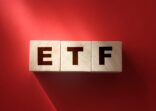He cited catastrophe bond strategies as an example of a niche product.
“These are not traditional fixed income products, not susceptible to interest rate movements with credit risk because they are not lending money to corporations. They are providing risk capital to insurance companies against natural disasters. That capital put at risk for disasters is only in excess of what the insurance company can pay themselves,” Djounov told FSA.
Other niche strategies he believes would appeal to Asia investors are in the private lending space. Products that are “liquid and complex but uncorrelated” with other asset classes.
For example, funds that provide capital for real estate lending or for commodities trading.
“Trade finance has typically been the domain of the banking sector, commercial and investment banks. With new regulations since the financial crisis, banks are stepping back from most of these areas and fund managers are stepping in.”
Asia strategy
In February, Djounov relocated to Hong Kong from the firm’s London office to take on the new role, which covers Asia-Pacific including Japan and Australia. The former Asia CEO, Henry Choon, left the firm last year.
According to FE data, GAM has 72 funds for sale in Hong Kong and/or Singapore. In Hong Kong, the firm has an investment team that manages Chinese and Asian equities portfolios. Total headcount in Asia is 35.
Djounov describes GAM as a manager of predominantly liquid products, working across all asset classes and style-agnostic.
The top items on his agenda in Asia, he said, are getting closer to clients and prospects, product innovation “coming up with ideas before the rest of the market picks them up” and growing regional sales of the firm’s products.
The target is the institutional and wholesale investor base in the region, he said. The firm does not address the retail market, except through a master agent relationship in Taiwan.
“We keep investigating the retail market. But Asia is not homogenous so it is not easy to get economies of scale. Retail sales are labour intensive. You need a large infrastructure in each country with call centres and support for individual investors.”
He added that the firm is monitoring retail demand in Indonesia, where fund distribution is dominated by large banks.
Active vs passive
The flow of assets into passive products continues and Djounov admitted that downward pressure on fees occurs because of “quasi-active products that hug an index and consistently underperform or do not demonstrate a consistent ability to outperform the benchmark”.
However, he believes that with the right active manager, the dispersion in returns between active and passive could be 200-500bp. “A 2%-5% excess return in traditional long only. In long short, it is much higher.”
As central banks unwind from asset-buying programs, ending the “tide that lifts all boats”, he sees reduced capital flows into passives and an opportunity for “certain active fund managers”.
“Tightening interest rate cycles have historically been associated with more dispersion between winners and losers and less outperformance for ETF or index funds. If passives underperform 3-4 quarters and as a group drop to third quartile, there will be performance anxiety and a push to active.”
















